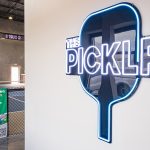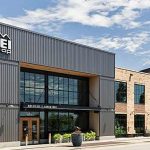Gildan Activewear reported net earnings dropped 66.6 percent in the first quarter on a decline of 3.6 percent in revenues. The company said results were in line with expectations and the company maintained its adjusted earnings guidance for the year.
The company also announced the completion of the purchase of a sizable land parcel in Bangladesh as part of its new capacity expansion initiative to develop large-scale vertically-integrated manufacturing in South-east Asia to support expected sales growth.
Results for the first quarter were in line with expectations, setting the company on track to deliver on its full-year sales and EPS targets for 2019. GAAP diluted EPS for the first quarter totaled 11 cents a share, and consistent with the company’s guidance as updated on March 26, 2019, adjusted diluted EPS of 16 cents came in at the high end of the company’s guidance range of 14 to 16 cents a share. As expected, earnings were down for the quarter versus last year due to anticipated factors, including the impact on sales from lower levels of distributor restocking and higher raw material and other input cost pressures. In addition, the earnings decline reflected a 12 cents per share trade accounts receivable impairment charge primarily related to the wind down of the Heritage Sportswear operations which is under receivership, as previously announced on March 26, 2019.
Net sales were down 3.6 percent in the first quarter and were better than the company’s guidance which called for a decline in the mid to high-single-digit range, primarily due to stronger than anticipated sales of fleece products and an earlier start of initial shipments of the company’s new private label men’s underwear program which will be available to consumers in the second quarter.
During the quarter, Gildan said it continued to execute on supply chain initiatives aimed at driving increased operational efficiency across its manufacturing base and from which cost benefits are expected to start materializing meaningfully in the fourth quarter of 2019 and benefiting gross margins in 2020. Gildan also continued with efforts to reduce SG&A as it works towards achieving a 2020 target of lowering SG&A as a percentage of sales to 12 percent or better. Finally, on April 9, 2019, Gildancompleted the purchase of land in Bangladesh which is intended to be used to expand its global textile and sewing operations. Plans consist of the development of a large multi-plant manufacturing complex which is currently expected to include two large textile facilities and related sewing operations. Once fully operational, this complex is expected to provide capacity to service over $500 million in sales. Over the next twenty-four months, the company plans to construct and develop the first textile facility at the complex. Initial production at the facility is expected to start in the latter part of 2021. The company believes the build-out of a large-scale manufacturing hub in South-east Asia will significantly enhance its positioning to service international markets and support other key sales growth drivers.
Operating results
During the first quarter, Gildan generated sales of $623.9 million, down 3.6 percent compared to the prior year quarter reflecting declines of 4.1 percent in activewear and 1.8 percent in the hosiery and underwear category. As expected, the decline in activewear, where Gildan generated $493.6 million in sales for the quarter, was primarily due to lower levels of distributor restocking of imprintables compared to the level of restocking that occurred in the first quarter last year in advance of the price increase implemented in March 2018. These factors were partly offset by double-digit growth in fleece shipments, which drove more favorable product-mix, and the impact of higher net selling prices. The slight sales decline in the hosiery and underwear category, where Gildan saw $130.4 million in overall sales, was mainly attributable to lower Gildan branded socks and underwear sales in the mass retail channel, which was largely offset by higher socks sales of licensed and global lifestyle brands compared to last year as well as the benefit of earlier than anticipated shipments of a new private label men’s underwear program in the mass channel, for which initial shipments began towards the end of the first quarter.
Gross margin in the first quarter of 2019 of 25.8 percent was down 140 basis points over the same period last year. The decrease in gross margin compared to the prior year quarter, which was expected, was primarily due to higher raw
material and other input costs, including inflationary pressures, and unfavorable foreign exchange, partly offset by the benefit of higher net selling prices and more favorable product-mix.
SG&A expenses for the first quarter of 2019 of $93.0 million were at the same level as in the prior-year quarter. As a percentage of sales, SG&A expenses were 14.9 percent, or 60 basis points higher than the prior-year quarter, primarily reflecting the lower level of sales in the quarter compared to last year. During the first quarter of 2019, the company recorded an impairment of trade accounts receivable of $24.4 million, of which $21.7 million related to the wind-down of operations of Heritage Sportswear which is under receivership, as announced on March 26, 2019, and $2.5 million related to the bankruptcy of Payless ShoeSource. Consequently, operating income of $32.7 million and adjusted operating income of $43.3 million were down $43.6 million and $39.4 million, respectively, compared to the same period last year, reflecting the lower sales base, inflationary cost pressures on gross profit, and the trade receivable impairment charge.
Net earnings for the three months ended March 31 amounted to $22.7 million, or 11 cents per share on a diluted basis, compared with net earnings of $67.9 million, or 31 cents per share on a diluted basis, for the same period last year. Excluding the impact of after-tax restructuring and acquisition-related costs in both years, Gildan reported adjusted net earnings
of $32.8 million, or 16 cents per share on a diluted basis, down from $74.6 million, or 34 cents per share on a diluted basis in the first quarter of 2018 mainly due to the decline in operating income and higher net financial expenses. The earnings decline on a per share basis was partly offset by the benefit of a lower share count compared to the prior year.
The company consumed $127.8 million of free cash flow in the first quarter of 2019 compared to $40.0 million of free cash flow consumed in the first quarter last year mainly as a result of lower earnings in the quarter, as anticipated, and higher working capital requirements, including planned inventory build. During the first quarter of 2019, capital expenditures totaling $22.8 million related primarily to investments in textile capacity expansion, including the ramp-up of our new Rio Nance 6 facility, and related sewing expansion, as well as investments in information technology. During the first quarter of 2019, the company repurchased 876,459 common shares at a total cost of approximately $31.0 million pursuant to its normal course issuer bid (NCIB) programs. The company ended the first quarter of 2019 with net debt of $891.5 million and a net debt leverage ratio1 of 1.6 times net debt to trailing twelve months adjusted EBITDA in line with the company’s target leverage.
Outlook
The company is now projecting 2019 GAAP diluted EPS of $1.75 to $1.85 and adjusted diluted EPS of $1.90 to $2.00, on projected sales growth in the mid-single-digit range. Sales and adjusted diluted EPS guidance is unchanged since the company’s update on March 26, 2019. The GAAP EPS range compares to its previous guidance of $1.80 to $1.90, which reflected previously projected restructuring and acquisition-related costs of approximately $20 million. After refining and incorporating estimates related to further manufacturing integration, including the consolidation of Canadian sheer hosiery manufacturing within the company’s global supply chain and additional sales and marketing initiatives to drive further operational efficiencies across the organization, the company is now projecting restructuring and acquisition-related costs to be in the range of $30 million. With the completion of the land acquisition in Bangladesh for approximately $45 million in cash, the company has updated its capital expenditure projection to be approximately $175 million compared to its previous guidance of $125 million. Consequently, free cash flow generation for 2019 is now expected to be in the range of $300 to $350 million compared to $350 to $400 million previously.
Adjusted EBITDA is now projected to be in excess of $605 million after reflecting the trade receivable charge in the quarter, compared to in excess of $630 million previously.












